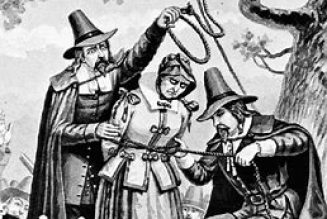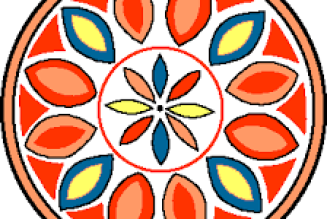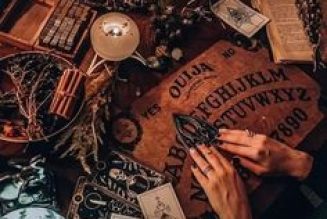Amulets are Objects imbued with magical properties that protect against bad luck, illness and evil.
Amulets are universal and are answers to age old needs, such as, to be healthy, to be virile and fertile, to be powerful and successful, to have good fortune and so on.
To ancient humans, these needs were controlled by the invisible forces of good and evil, prayers, sacrifices and offerings induced the good spirits to grant blessings; amulets prevented the evil spirits from taking them away.
Early amulets were natural objects whose unusual shapes or colors attracted attention.
The magical properties of such objects were presumed to be inherent.
As civilization advanced, amulets became more diverse.
They were fashioned into animal shapes, symbols, rings, seals and plaques, and were imbued with magical power with inscriptions or spells.
The term amulet comes from either the Latin word amuletum or the Old Latin term amoletum, which stands for “means of defense.”
The Roman naturalist, Pliny, defined three basic types of amulets.
These are, those offering protection against trouble and adversity, those providing a medical or prophylactic treatment, and substances used in medicine.
Within these three general categories are many subdivisions, for no one amulet is broadly multipurpose.
Amulets with inscriptions are also called charms.
An amulet typically is worn on the body—usually hung around the neck—but some amulets guard tombs, homes and buildings.
The ancient Egyptians, Assyrians, Babylonians, Arabs and Hebrews placed great importance in amulets.
The Egyptians used them everywhere.
The frog protected fertility, ankhs were linked to everlasting life and generation, the udjat, or eye of Horus, was for good health, comfort and protection against evil, the scarab beetle was for resurrection after death and protection against evil magic.
Some Egyptian amulets are huge.
A stone beetle mounted on a pedestal at Karnak (now at the British Museum) measures five feet long by three feet wide, and weighs more than two tons.
The Assyrians and Babylonians used cylinder seals that were embedded with semiprecious and precious stones, each stone having its own unique magical powers.
Various animal shapes served as amulets, for example, the ram for virility, and the bull for virility and strength.
The Arabs gathered dust from tombs and carried it in little sacks as protection against evil.
They also wore pieces of paper on which were written prayers, spells, magical names or the highly powerful attributes of God, such as “the compassionate” and “the forgiver.”
Hebrews wore crescent moons to ward off the evil eye and attached bells to their clothing to ward off evil spirits.
The natives of the west coast of Africa carry amulets which Western explorers named fetishes.
A fetish consists of a pouch or box of “medicine” such as plants, fruits or vegetables, animal hair, paws, dung or livers, snakeheads, spittle, and urine.
Natives believe that the fetish also contains a god or spirit who will help the wearer of the fetish obtain his or her desire.
Two amuletic symbols that are nearly universal throughout history are eyes and phallic symbols.
Eyes protect against evil spirits and are found on many tombs and walls, and on utensils and jewelry.
The phallic symbol, as represented by horns and hands, protects against the evil eye.
The names of God and gods, and magical words and numbers, have provided amuletic protection since antiquity.
These were particularly popular from the Renaissance to the early 19th century, when the grimoires, books of magical instruction, were written.
In magic, using the name of a deity tap into divine power.
In the Old Testament, the Hebrews gave the personal name of God as a four-letter word called the tetragrammaton, transliterated as yhwh and pronounced “Yahweh.”
This name appeared in different spellings on many amulets and talismans to help magicians conjure demons and protect them from attack by the spirits.
Some magical words and numbers are arranged in patterns of squares.
One of the best known of these is the “Sator Square”.
Although numerous attempts have been made to translate the Sator square into something that makes sense, it remains nonsensical.
It was inscribed on walls and vessels as early as ancient Rome and was considered an amulet against sorcery, poisonous air, colic and pestilence, and for protecting cow’s milk from witchcraft.
Holy books such as the Koran, Torah, and Bible are considered to have protective powers.
Bits of parchment with scripture quotes, carried in leather pouches or silver boxes, are amulets in various religions.
Ancient pagans wore figurines of their gods as amulets.
This custom was absorbed into the Catholic Church.
In Witchcraft, the most powerful amulet is the silver pentacle, the symbol of the Craft.
Silver has amuletic properties and is used in jewelry along with various crystals and gems.
The sign of the pentacle, called a pentagram, is traced in the air in rituals done to protect sacred sites, homes and other places.
Other amulets are made from herbs and various ingredients, which can be placed in a charm bag.








